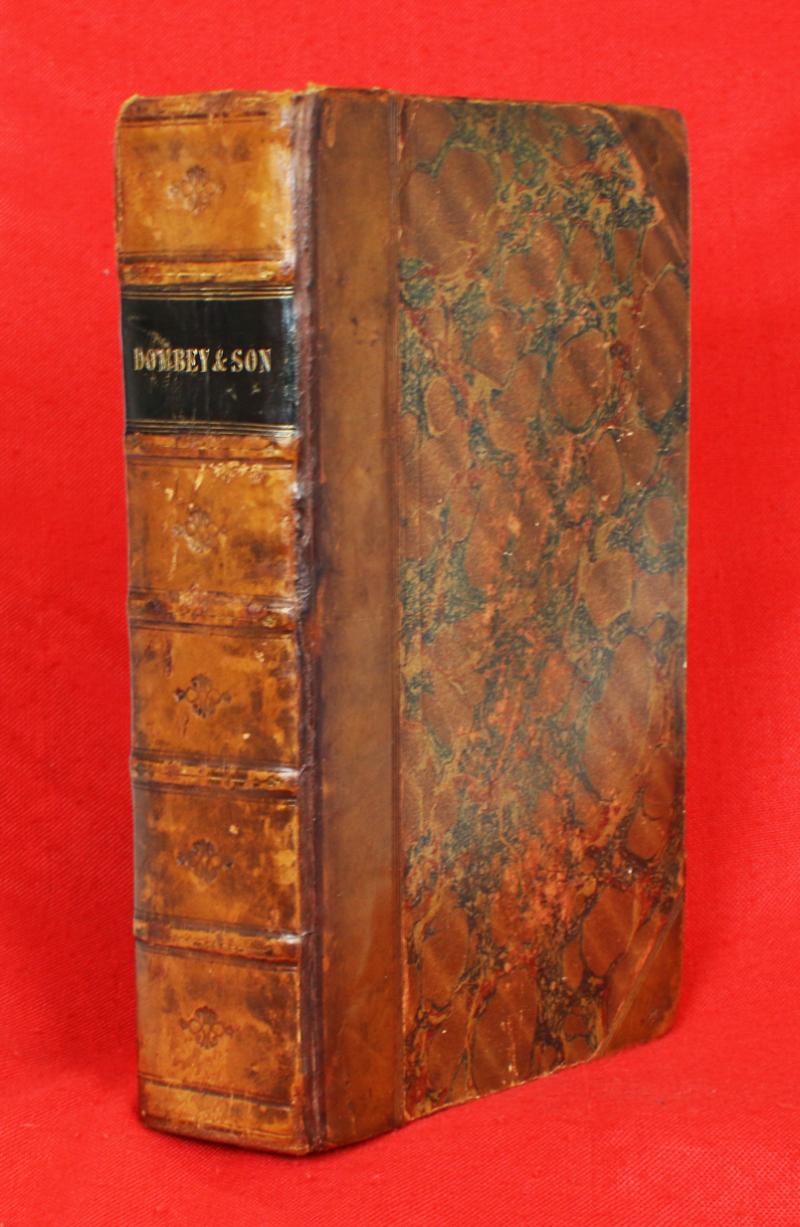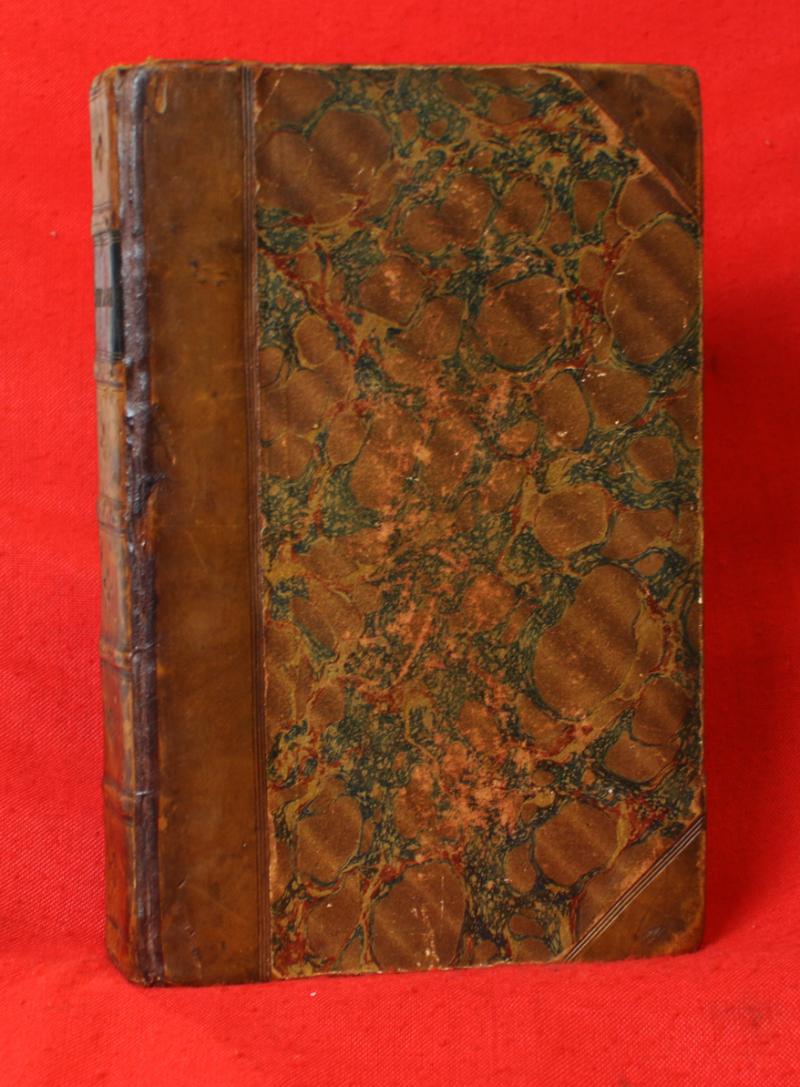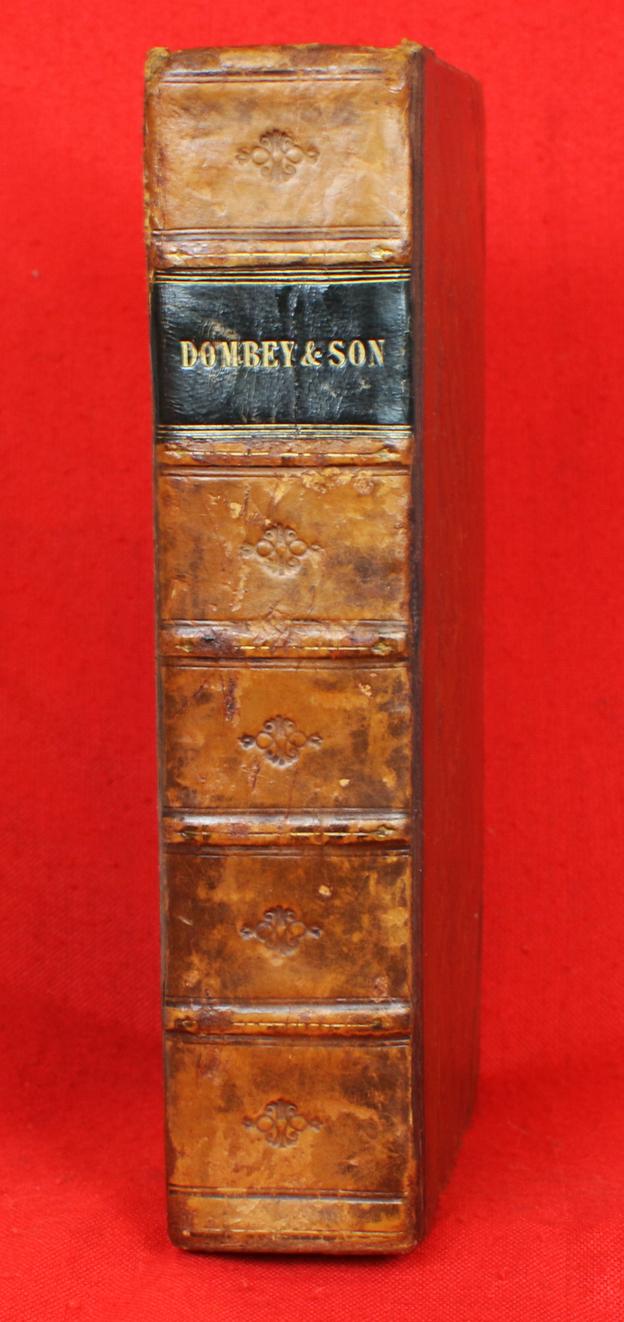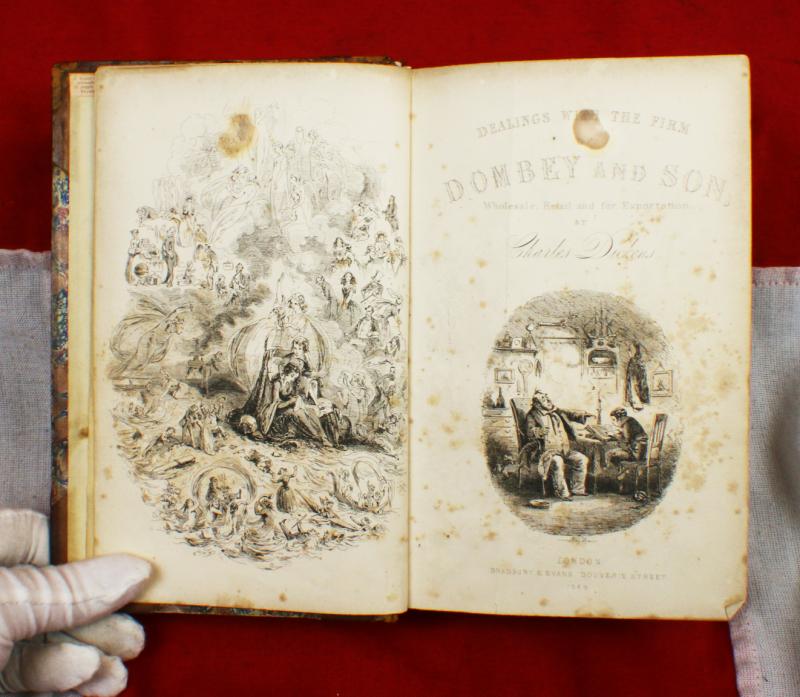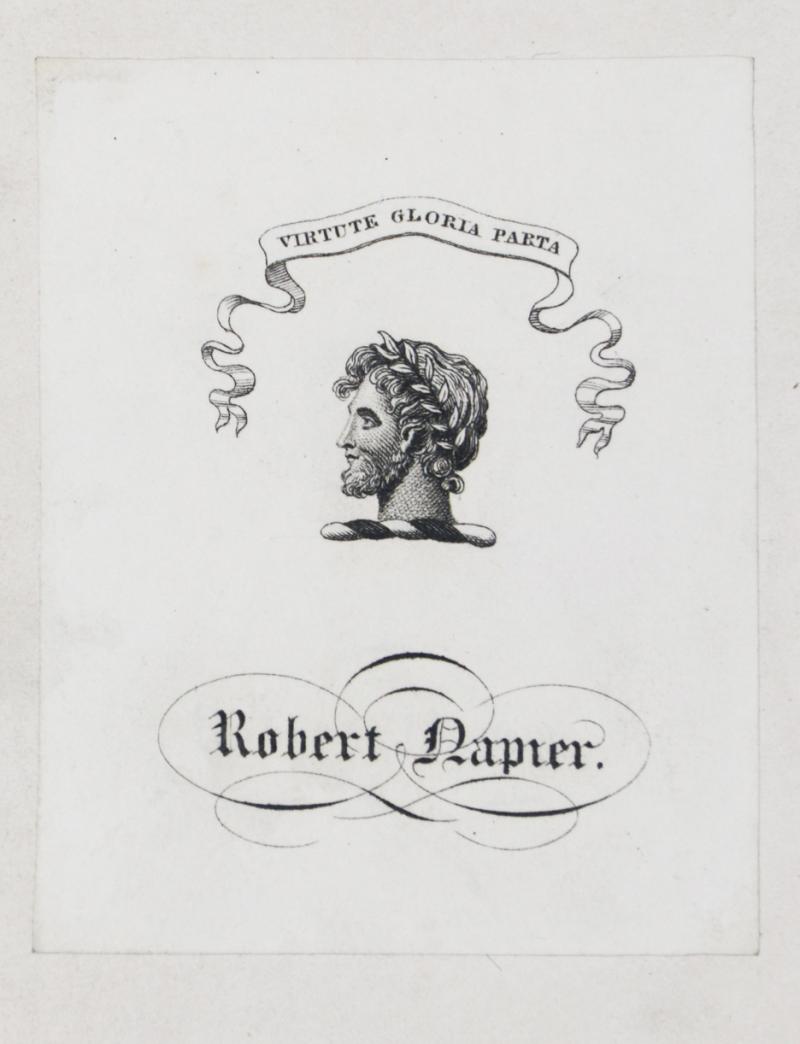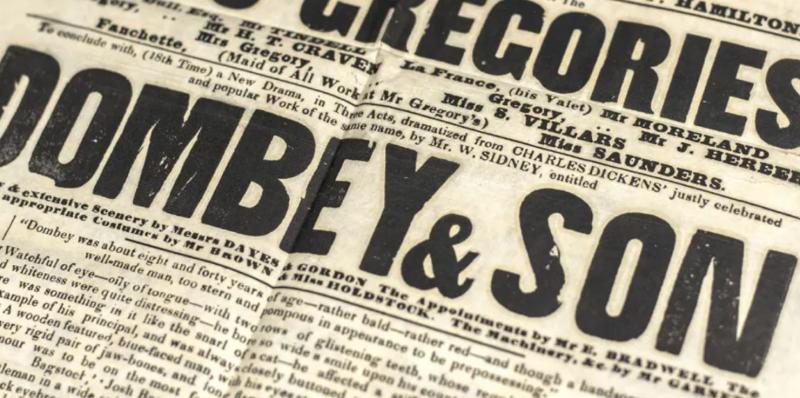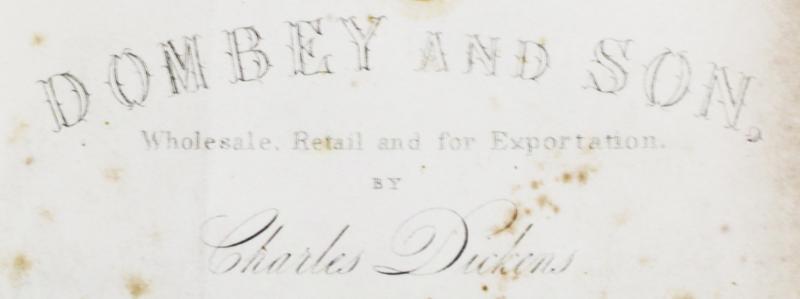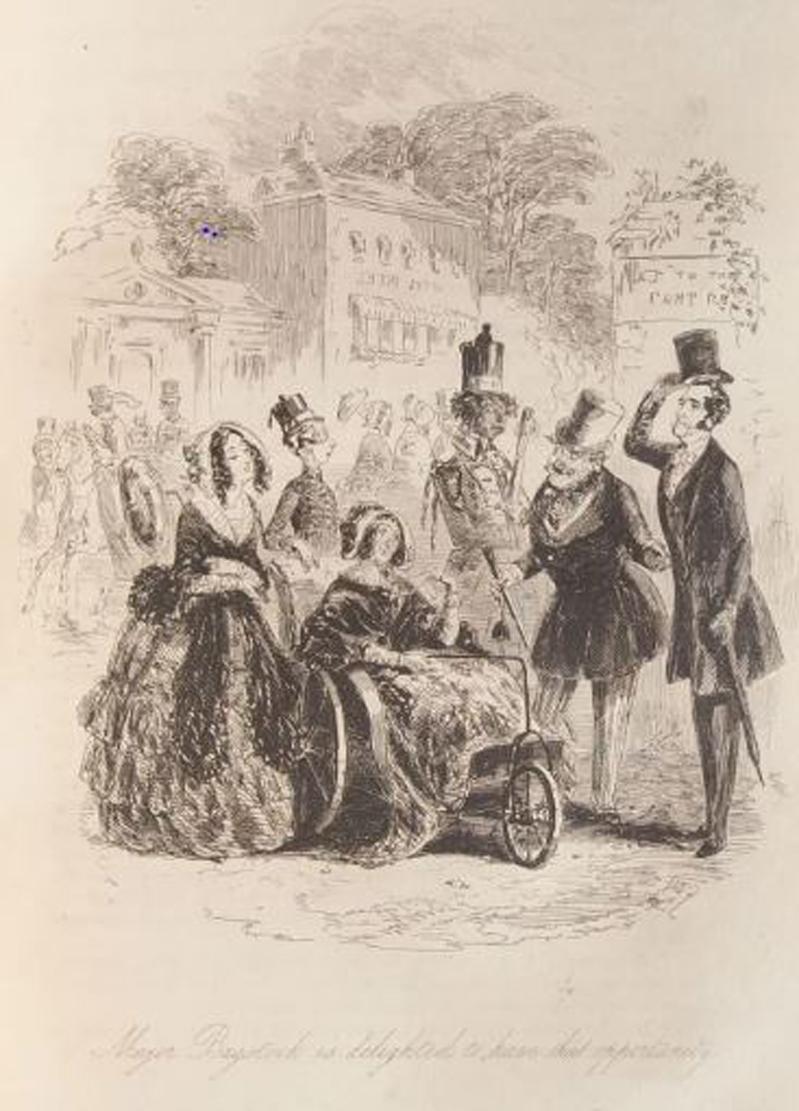Charles Dickens Ist Edition Of Dombey & Son From the Shandon Collection of Robert Napier Half Bound With Marble Leaves. With Illustrations by Hablot Knight Browne "Phiz." One Of The Greatest Of All His Works
Our most popular book purchases from The Lanes Armoury, for gifting at Christmas, will always be a fine Charles Dickens 1st edition! An heirloom for generations to come, that combines to be a fabulous read as well as an antiquarian joy.
London: Bradbury and Evans, 1848 Frontispiece, vignette title, and 38 plates by Hablot Knight Browne (Phiz); plate 35 being the first published example of a "dark plate" Normal staining and foxing to the frontispiece,with foxing as usual, to the plates, browned and stained. A very good copy. The one dark plate in Dombey and Son is "On the Dark Road," p. 547. The smooth blending of light and shadow on this illustration vividly contrasts it with the other illustrations in the novel and is a fine example of the dark plate process"
There's no writing against such power as this - one has no chance' William Makepeace Thackeray.
First edition, this novel is "now recognized as one of the greatest of all his works... It is also the first one to have an explicitly contemporary setting"
Following issue in parts from September 1846 to March 1848, Bradbury and Evans issued the novel in book form in the present cloth. In the 19th number of the part issue, a slip advertised the novel, ready for delivery on 12 April, at £1 1s. in cloth, or £1 4s. 6d in half morocco. The slip goes on to note "Subscribers desirous of having their copies bound in a similar style can have them done by Messrs. Chapman & Hall, 186, Strand, or through their Booksellers, at the following prices:– Whole bound, morocco gilt edges 6s. 6d. Half bound, marble leaves, 4s. 6d. In cloth, lettered 1s. 6d".
For Dickens's novels, the publisher kept a stock of first edition sheets, and bound up copies and issued them over time as demand required. So too, owners of the parts could make use of the binding services long after publication.
A compelling depiction of a man imprisoned by his own pride, Dombey and Son explores the devastating effects of emotional deprivation on a dysfunctional family. Paul Dombey runs his household as he runs his business: coldly, calculatingly and commercially. The only person he cares for is his little son, while his motherless daughter Florence is merely a 'base coin that couldn't be invested'. As Dombey's callousness extends to others, including his defiant second wife Edith, he sows the seeds of his own destruction.
Robert Napier, (1791-1876, second son of James Napier of Dumbarton and Jean Ewing of Rosneath was born at Dumbarton on 18th June 1791. Like his cousin David, he was educated at Dumbarton Public School. One of his teachers, a Mr Traill, recognised his aptitude for mechanical and architectural drawing and encouraged him in developing this skill. Being the eldest son (his brother having died in infancy) and in accordance with Scottish custom, the intention had been that he should enter the Church. However, he felt more forcefully drawn towards following the blacksmith’s trade and at the age of fourteen began working for his father. In 1812 he went to Edinburgh, obtaining a post at Robert Stevenson's works. He returned to Glasgow in 1815 and opened a small blacksmith’s business in Greyfriar’s Wynd. His success there led him to lease the Camlachie works from his cousin David, when David moved his own business to Lancefield. At Camlachie his main business was ironfounding and engineering, constructing marine engines for steamships.
In 1827 he moved his business to larger premises at the Vulcan Foundry in Washington Street, which was nearer the harbour, and in 1835 he took over the foundry at Lancefield when his cousin David moved to London. Combining this with the Camlachie and Vulcan works, Robert Napier thus pioneered an integrated engineering and shipbuilding firm. At Lancefield between 1836 and 1840 he supplied engines for a number of vessels, including those of the East India Company and vessels which would run between England and New York. In 1840 he first became involved in supplying engines to Samuel Cunard, for vessels carrying mail to North America. At his recommendation Cunard was persuaded to increase the size of these vessels, and to enter into partnership with others, a move which proved to be the origin of the Cunard Company. Robert Napier supplied engines for all the paddle-wheel ships operated by Cunard over the next fifteen years. Napier's business was concerned mainly with supplying engines until 1841, when he opened a shipbuilding yard at Govan, building his first ship, the Vanguard, in 1843 for the Glasgow Dublin route. In 1818 he married his cousin Isabella, daughter of John Napier and sister of David. His sons James Robert and John were taken into partnership in 1853. He owned a country estate at West Shandon, and was a prolific collector of works of art and of pottery, his collection becoming known as the Shandon Collection. He died at West Shandon, Glasgow on 23 June 1876.
A very good and beautiful copy with one small corner tear on a later plate.
One picture in the gallery is from an original newspaper showing his play Dombey and Son being advertised {for information only}
Code: 25955
975.00 GBP

